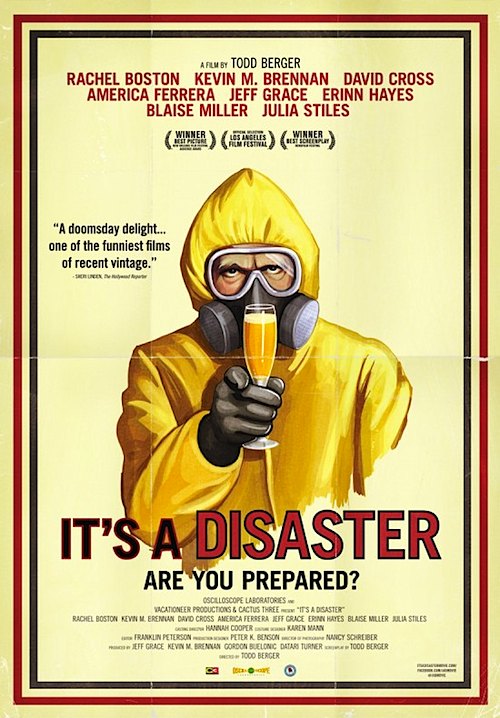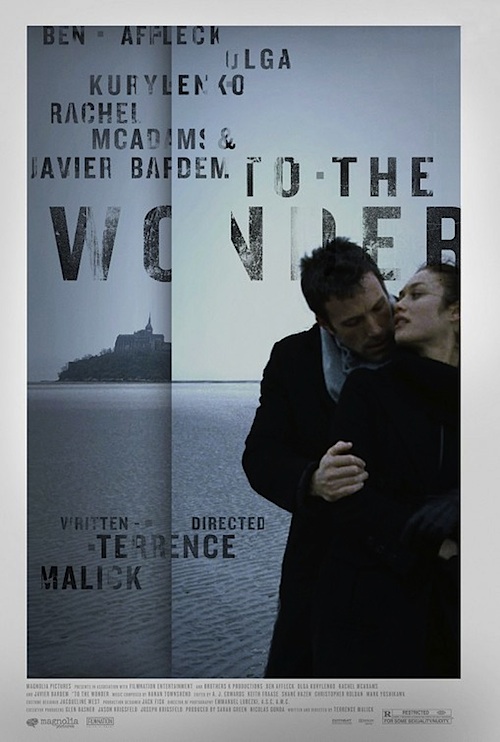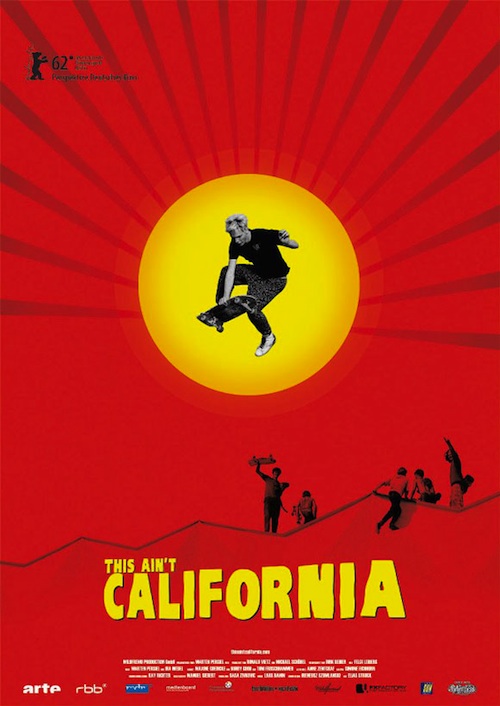By Joe Bendel. The world will soon be destroyed, but annoying hipsters remain eternal, like cockroaches. A small circle of friends (or frienemies) will brunch on vegan stew and saran gas in Todd Berger’s It’s a Disaster, which opens today in New York.
Hamlet might say that the regular couples’ brunch hosted by Emma and Pete Mandrake is a custom “more honored in the breach than the observance.” Nobody really enjoys them, but they feel obligated to attend. Glenn Randolph is about to find out why. He is new to the group, having only dated the romantically luckless Tracy Scott for a few weeks. Before the scrupulously unidentified terrorists or whatever strike, the Mandrakes drop their own bomb, announcing their plans to divorce.
The already tense mood is hardly improved when cable, internet, and wireless service all go on the blink. Eventually, the self-absorbed couples get the inkling something might be amiss, leading to a mad search to find an old fashioned terrestrial radio.
 Even though Disaster is essentially a comedic sketch drawn out to feature length, the first two thirds are consistently amusing. Berger wryly skewers his consumerist yuppie couples, walking a fine line in their characterization. They are neither too likable for the audience to be overly concerned about their impending doom, nor so unpleasant we resent spending eighty-eight minutes in their company.
Even though Disaster is essentially a comedic sketch drawn out to feature length, the first two thirds are consistently amusing. Berger wryly skewers his consumerist yuppie couples, walking a fine line in their characterization. They are neither too likable for the audience to be overly concerned about their impending doom, nor so unpleasant we resent spending eighty-eight minutes in their company.
Unfortunately, Disaster craters in the home stretch, mean-spiritedly bludgeoning evangelicals. Satire is only really funny when it is based on a thorough understanding of the subject getting the business. Frankly, it seems like all Berger knows about the Rapture he gleaned from a Left Behind trailer.
Up to a point, David Cross is quite amusing as Randolph and the persistently under-appreciated Julia Stiles displays some nice comic timing as Scott. Rachel Boston and Kevin M. Brennan also show an aptitude for broad, slightly risqué material. America Ferrera and Jeff Grace have plenty of shtick as the perennially engaged Hedy Galili and Shane Owens, but they never look or sound like a convincing couple and generally lack presence on-screen. On the other hand, Erinn Hayes and Blaise Miller are completely believable as the bickering Mandrakes, but Berger largely shortchanges them on zingers.
The unfathomable stress of Armageddon could be a telling crucible to examine human nature in all its extremes and banalities. Yet, like Abel Ferrara’s 4:44 Last Day on Earth, Disaster largely squanders the potential opportunity. There are a fair amount of laughs and some clever gags in the film, but it will leave many viewers will a sour after-taste. Recommended only for full of themselves David Cross fans, It’s a Disaster opens today (4/12) in New York at the Village East and in Brooklyn (naturally) at the Nitehawk Cinema.
LFM GRADE: C+
Posted on April 12th, 2013 at 9:32am.





